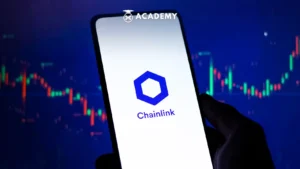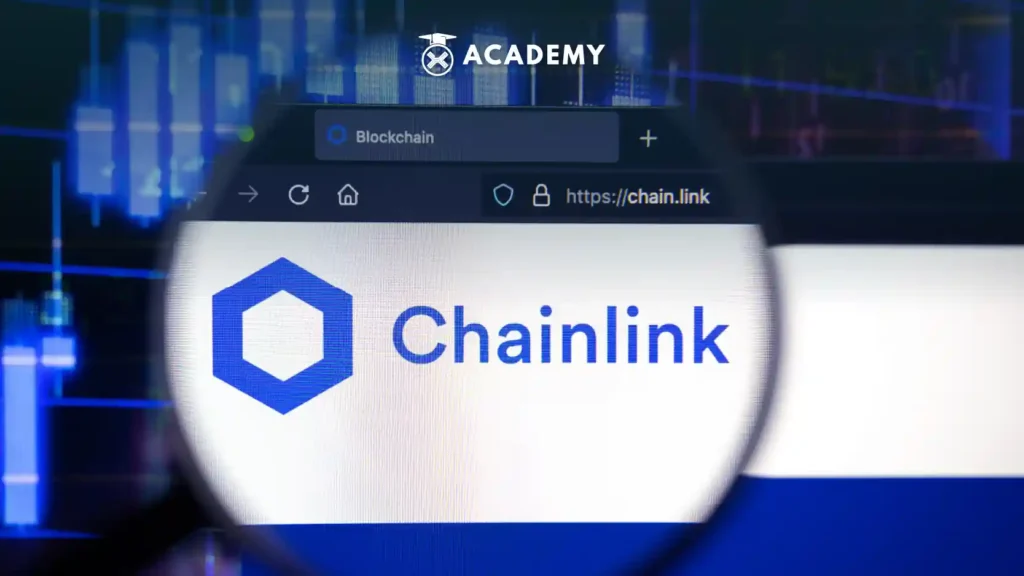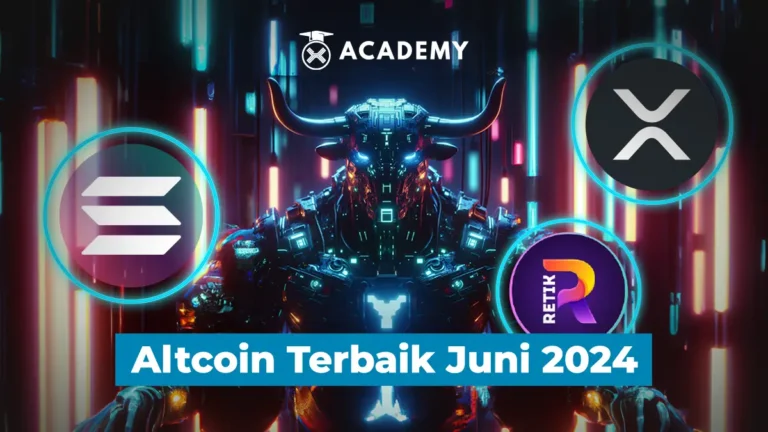To date, one of the main challenges that blockchain technology has not been able to overcome is its inability to interact with data outside the network. Ultimately, this challenge led to the birth of ChainLink. In simple terms, Chainlink has the ability to integrate real-world data into smart contracts and vice versa.
Chainlink has also become important in the blockchain ecosystem because it identifies itself as a blockchain-based oracle that provides solutions for connecting blockchain technology with off-chain technology. Oracles, in this context, are entities that connect real-world data with decentralized systems, opening up opportunities for blockchain technology to interact with data from the outside world.
So, to better understand what Chainlink is, how it works, its architecture, its crypto asset (LINK), and how to buy it on INDODAX, see the following review.
What is ChainLink?

Please note that the Chainlink network was introduced in June 2017 by an American company called SmartContract. The Chainlink whitepaper was published by SmartContract’s two founders, Steve Ellis and Sergey Nazarov, along with their company advisor, Ari Juels, in September 2017.
Chainlink acts as an oracle network that connects data from outside the blockchain into smart contracts. In other words, Chainlink is a platform that unites payment systems and external data, such as web application programming interfaces (APIs), data feeds, or general bank accounts, into smart contracts.
This network functions in a decentralized manner, connecting blockchain technology with the world out there that does not use blockchain technology. In this system, data providers or oracles can sell access to their data via Chainlink and profit from the information they hold.
Chainlink’s main function is to act as an intermediary between blockchain technology-based smart contracts (specifically those used by Ethereum) and real-world applications. Since blockchain cannot access data outside its own network, oracles (defi instruments) are needed to provide the data required in smart contracts.
In the context of Chainlink, oracles are connected to the Ethereum network. They provide external data such as temperature or weather, which triggers the execution of a smart contract upon meeting certain conditions. Chainlink allows users to become node operators who can generate profits by providing the data infrastructure that supports the success of the blockchain.
In other words, node operators will receive incentives when they can provide the external data required by the smart contract. If users want to access data from outside the blockchain, they can submit a request contract to the Chainlink network.
Get to know how Chainlink Works
Knowing how Chainlink works is very important because this platform plays a vital role in the blockchain ecosystem. For information, Chainlink adopts three types of smart contracts for processing data: reputation contracts, order-matching contracts, and aggregating contracts. Here’s how Chainlink works that you need to know, namely:
1. Oracle Selection
Chainlink Coin users create a service-level agreement (SLA) to determine the required data requirements. Later, the software will use this SLA as a basis for evaluating and matching users with data providers or oracles. Once the agreement is established, the user will submit the SLA and deposit Chainlink Coin (LINK) in the order-matching contract.
2. Data Reporting
At this stage, the data provider or Oracle, connects with the outside world (external sources) and collects off-chain data according to the requests in the SLA. The oracle processes the data and sends it back into a contract that runs on the Chainlink blockchain.
3. Calculation of Results
This process involves calculating the results of the data set received from the selected oracles and flowing the results back into the contract. At this stage, the merge contract will assess the validity of any data received. In simple terms, Chainlink can be thought of as the Google Play Store or App Store, which functions as an intermediary.
Like the App Store, Chainlink provides services to various parties to sell their data within the Chainlink network. Thus, Chainlink’s profits are obtained from all data providers (oracles) operating within its ecosystem.
Chainlink Architecture
To carry out its operations, Chainlink uses three types of smart contracts in its network: aggregating contracts, order-matching contracts, and reputation contracts. All three have different functions, starting from data collection and execution with oracles to guaranteeing reputation.
Chainlink is a blockchain that integrates these three types of smart contracts in a complementary manner. In other words, Chainlink uses these three technologies together to make it easier for users to access real data from data providers.
Interaction is not limited to data providers operating within the blockchain network. Therefore, the existence of reliable smart contracts is very important so that transactions in this network can run smoothly.
Nodes in Chainlink consist of two main components, namely cores and adapters. The core’s function is to read the new SLA and forward it to the adapter. Next, the node adapter serves as an intermediary between the node and external data.
These nodes are responsible for reading, processing, and storing external data back into the blockchain. Thus, Chainlink enables accurate and reliable data integration within the blockchain ecosystem.
Chainlink Crypto Assets

Chainlink has its own internal crypto asset called LINK. LINK is a crypto token created by Chainlink and operates on the Ethereum network with the ERC677 token standard, which is based on the ERC20 token standard. This token is used to carry out transactions on their platform.
When transactions such as data collection or distribution occur on the Chainlink network, payments are made using Chainlink Coin (LINK) with ERC20 tokens.
LINK is awarded to nodes that comply with software rules and provide useful external data to smart contracts. In exchange, users who request data retrieval transactions must pay a LINK amount. These paid LINKs are used to provide rewards to Chainlink Node Operators.
How to Buy Chainlink on Indodax
To get LINK crypto assets, you can buy them at INDODAX. Following are the steps for buying Chainlink crypto assets on INDODAX that you need to know, namely:
- The first step is to visit the official INDODAX website.
- Next, create an account by clicking the “Register Indodax” button, then follow the instructions to create a new account. At this stage, you need to provide your email address, password, and other personal information as requested.
- The next step is account verification. After registering, verify your account according to INDODAX requirements.
- Then, continue by adding funds to your INDODAX account. The method is to log in to your INDODAX account, then select “Deposit Rupiah” or “Deposit Crypto” to add funds to your account. Here, you can use various payment methods, including bank transfers or local electronic payment methods.
- The next step is to buy Chainlink (LINK). After your account is filled with funds, select the “Trading” menu and select the Link to IDR (LINK to IDR) trading pair to buy Chainlink with Rupiah currency.
- Then, you can choose the type of order you want to make, such as a market order or a limit order. In a market order, you will buy LINK at the chainlink price in the current market, while a limit order allows you to set the desired purchase price.
Lastly, please confirm the order. The way to do this is by filling in the number of chainlinks you want to buy and confirming your order. Finished!
Conclusion
In conclusion, Chainlink plays a very important role in the blockchain ecosystem by solving the problem of integrating real-world data into smart contracts. By enabling secure and trustworthy interactions between off-chain data and blockchain applications, Chainlink makes blockchain applications more functional and useful across various industries, especially in decentralized finance (DeFi).
On the other hand, the challenges faced by Chainlink, one of which is security, In this regard, Chainlink must remain focused on data security and privacy, considering the importance of the information accessed by smart contracts. In terms of scalability, with the growth in demand for Chainlink services, scalability is becoming an important factor to ensure fast and reliable data delivery.
Meanwhile, Chainlink’s future potential lies in the development of DeFi, the Internet of Things (IoT), industrial cooperation, and technological innovation. Ultimately, by maintaining a focus on security, scalability, and adaptation to market and regulatory changes, Chainlink is believed to have great potential to continue to grow and play an important role in accelerating the adoption of blockchain technology in the future.








